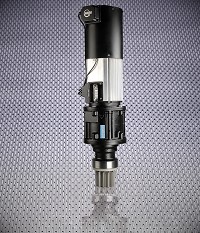
Pitch drives from ABM Greiffenberger position the angle of each blade. Pitch drives must be more compact than yaw drives. Even when exposed to the toughest environment they perform steadily for 20 years and more.
Yaw drives from Germany-based ABM Greiffenberger, Milford, Ohio, maintain nacelle positions into the wind to maximize energy generation. The drive uses a combination of induction motors and multi-stage planetary gearboxes. High grade components, most manufactured in-house, and durable roller bearings ensure maximum life with minimal maintenance. High torsion resistance maintains an exact position even in high wind gusts. Motor outputs range from 2.2 to 22 kW and gearboxes come in ratios from 100 to 2,000. Drive systems have output torque ratings from 2,000 to 50,000 Nm and maximum output torques of up to 100, 000 Nm. The units work at temperatures as low as – 40C.
Drives for wind turbines also run quietly with high overload capacity. Drives allow easy oil changes even in adverse conditions such as the high altitudes of a wind turbine tower.
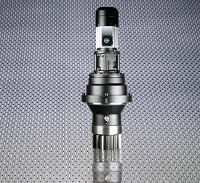
The recent ABM Greiffenberger yaw drives maintain nacelle positions to the wind to maximize energy generation. Here, a combination of induction motors and multi-stage planetary gearboxes are used.
Filed Under: Blades

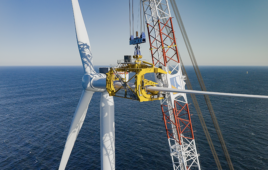
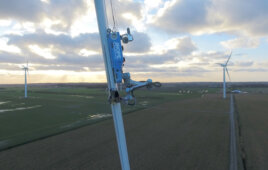
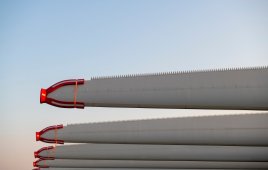
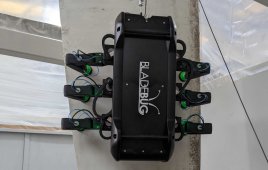
Mark:
I’m somewhat familiar with laser wind sensors. If your devices can let turbines capture just 10% more energy, that would be significant. 20% and more should be too good to ignore.
Now, to your question: Would the 20 year life expectancy on yaw motors change if the turbine is acting on an expected incoming wind direction rather than reacting to it? I suspect (and this is only my guessing) their service life would slightly lengthen because their working loads would be lower. You suggest their time “on” or operating would lengthen. Does data show that?
I understand yaw motors pull against yaw brakes that sort of drag because they do not fully release. It could be that the brake pads might need a closer eye but even that could be accommodated for and the 20 year life still an hittable target.
Do you have any load data for yaw motors before and after Vindicator installation?
Thanks for asking.
Paul Dvorak
Paul:
I enjoyed reading your article on yaw and pitch drives. I represent a company called Catch the Wind, Inc. We have developed a product for the wind generation industry with a breakthrough technology – the world’s first pulsed laser wind sensor that can be mounted on the nacelle of large wind turbines to allow much improved alignment with the wind, thereby increasing power output by at least 10%, while decreasing operating costs.
Presently, we expect our product to increase the utilization by 30% or more. Given that the yaw and/or pitch drives are designed to last for 20 years with minimal maintenance, do you think this would change if the yaw motor was used t a greater degree? I’m trying to determine if the greater use of the yaw motor will be a factor in the overall economics. I would appreciate any thoughts you may have.
Mark Smith
msmith@catchthewindinc.com; 703-393-0754 Ext 137